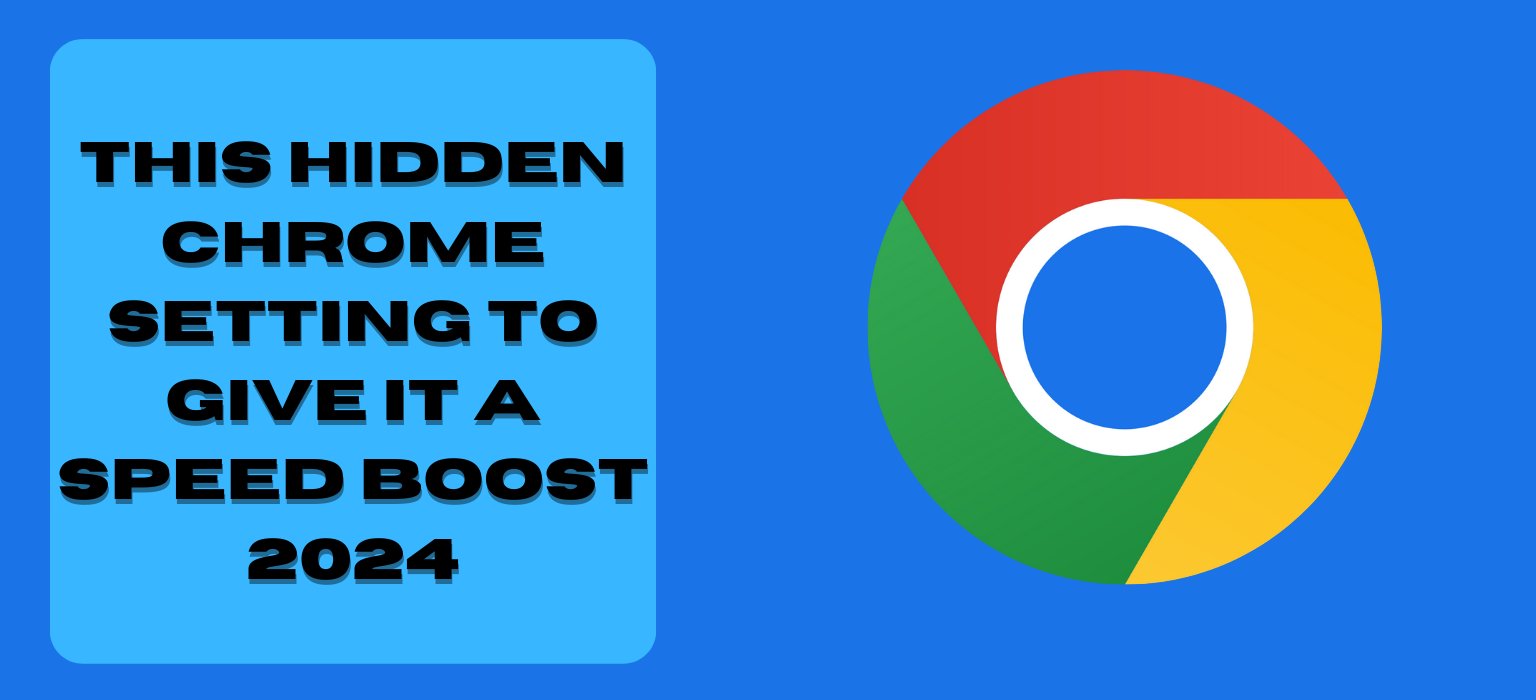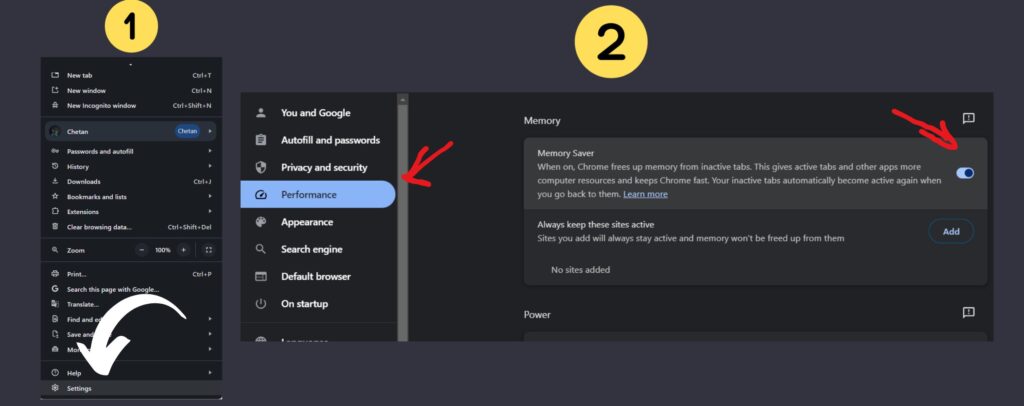

Chrome Setting– If your computer seems slow even though you haven’t been using it for anything demanding, the culprit may be hidden in plain sight – your web browser. Google Chrome is used by over 60% of desktop internet users, and it’s known to be something of a memory hog. The more tabs you have open, the more RAM Chrome uses, which can slow everything on your computer down to a crawl.
Fortunately, Google has baked a useful setting into Chrome that can help reclaim some of that lost performance, even if you tend to browse with many tabs open. It’s called Memory Saver, and it frees up memory by suspending inactive tabs. Best of all, it takes just a few clicks to enable. Read on to learn how to turn on Memory Saver and potentially give your computer a much-needed speed boost.
Why Google Chrome Uses So Much Memory
Before we dive into the step-by-step instructions, it helps to understand just why Chrome is such a memory glutton. When you open up a new tab, Chrome allocates a certain amount of your computer’s RAM to power that tab. The more tabs you have running, the more total memory Chrome requires.
This wouldn’t be an issue if Chrome released memory when you closed tabs. But unfortunately, it doesn’t always work this way. Over time, the browser ends up using more and more RAM, even for tabs that you aren’t actively viewing. This leaves less available memory for your other programs and processes, resulting in annoying slowdowns, freezes, and crashes across your whole system.
The Problem Is Worse for Cheap Laptops
Cheap laptops and low-end machines feel the pain more severely thanks to skimpy amounts of RAM. For example, many budget notebook PCs still ship with just 4GB or 8GB of memory. Those amounts are barely enough for light web browsing when Chrome gobbles so much.
But this isn’t just an issue for underpowered hardware. Even pricey gaming rigs packing 32GB or more of fast DDR4 memory can still get bogged down by Chrome’s endless appetite. The common factor is having lots of tabs open, as each additional tab increases Chrome’s memory load.
Memory Saver to the Rescue
Luckily, Google engineered a clever solution that us tab addicts can take full advantage of. Memory Saver, when switched on, temporarily suspends the memory allocation for tabs you aren’t currently viewing. This frees up that RAM for use by other apps and processes.
Then when you click on one of those suspended tabs to view it again, Chrome instantly reactivates it so the page loads normally. It’s seamless, yet it keeps your computer’s total memory usage lighter. Leaving Memory Saver enabled basically tricks Chrome into releasing RAM that it would otherwise hog indefinitely.
Other Browsers Have Similar Tools
Google Chrome isn’t the only browser culprit when it comes to high memory utilization. Firefox and Safari for Mac can also occupy plenty of RAM when you have numerous tabs running. The good news is that they too offer special modes to curb memory strain.
For Firefox, enable the aptly titled “Suspend Background Tabs” function. In Safari on a Mac, the equivalent is Safari Technology Preview’s Memory Limit feature. So if you use an alternative to Chrome, check whether your browser has something similar baked in. But Chrome still dominates the market, so most can benefit from its native Memory Saver.
How to Turn On Memory Saver in Google Chrome
Enabling Chrome’s built-in Memory Saver only takes a few clicks, and you can toggle it on or off anytime. We’ll cover how to flip the switch on both Windows 10 & 11 PCs plus Mac machines running macOS. The steps are nearly identical across platforms, with just slight differences in the interface layout.
- Step 1: Open Chrome’s Settings Menu Chrome settings menu on Windows 11
On Windows, click the three-dot menu button in Chrome’s upper right corner, then select Settings. Or press Ctrl + Comma.
On a Mac, click Chrome > Preferences or press Command + Comma. Alternatively, type chrome://settings/ into the address bar and press Enter.
- Step 2: Click Advanced Navigate to the advanced settings
In the left sidebar of the settings screen, scroll down and click Advanced.
- Step 3: Toggle “Use Memory Saver” On Enable Memory Saver On this screen, toggle the switch for Use Memory Saver to the On position.
That’s all you need to do on both Windows and Mac machines to activate Chrome’s memory-freeing setting. From now on, your inactive tabs will release RAM back to your system while maintaining their state.

Get Faster Page Loads by Adding More RAM
While Memory Saver can help Chrome run more efficiently, adding more RAM is still one of the best ways to speed up a sluggish computer. More memory allows you to multi-task with less slow down across many programs.
Upgrading to 16GB or 32GB does wonders, especially for budget laptops that often come with only 4GB or 8GB. Even gaming PCs see gains going from 16GB up to 32GB. Check out our guide on how to install more RAM in a desktop PC if an upgrade sounds enticing.
Combine Memory Saver with These Other Chrome Tweaks
Using Memory Saver alongside a few other clever Chrome adjustments can transform an overloaded, crawling browser into one that zips along. Here are some additional performance-boosting settings we recommend flipping on:
- Site Isolation – Helps contain website crashes to single tabs. Turn this on in Settings > Privacy and security.
- Tab throttling – Slows down inactive tabs to devote more resources to the current tab. Enable via Settings > Performance.
- Hardware acceleration – Offloads some Chrome visual processing to your GPU. Find this in Settings > System.
- Remove unnecessary extensions – Cull any add-ons you don’t really need to lighten browser overhead.
- Clear cache & cookies – Wipes temporary Chrome files to reclaim hard drive space and speed up page loads.
FAQs About Memory Saver
Chrome’s Memory Saver caught your interest, but you still have some lingering questions? Below we’ve tackled some common FAQs to eliminate any confusion:
Does Memory Saver reduce memory usage?
Yes. By suspending inactive tabs, less of Chrome’s total memory allocation is actively occupied, so more is freed up. Think of it as swapping out tabs you aren’t viewing at the moment.
Do suspended tabs reset or reload?
No. When you click a suspended tab, it instantly resumes exactly where you left off with no need to refresh or restart that webpage. The suspension is seamless.
Can you tell which tabs are suspended?
Not easily. Suspended tabs look identical to active ones. However, inactive tabs will reload if you close Chrome entirely with Memory Saver on.
Does Memory Saver slow down Chrome?
No. In fact, it should speed up the browser by reducing resource strain. Suspended tabs take a fraction of a second to resume too.
What happens to video and music playback in suspended tabs?
Playback is paused automatically in suspended tabs to avoid wasted system resources on media you aren’t even watching or listening to at that moment.
Can you whitelist certain tabs to stay active?
No, Chrome offers no whitelisting functionality currently. Memory Saver suspends every inactive tab when enabled.
Does Memory Saver work differently on Macs vs. Windows PCs?
No. This feature functions identically across platforms to alleviate Chrome’s memory bloat.
Should I leave Memory Saver on all the time?
We recommend it! There are no major downsides to keeping it enabled even if you only browse with a few tabs active at once. Consider it preventative spring cleaning for your RAM.
Final Words
Google Chrome may offer leading features, extensions, and synchronization across devices that keep it ranked as the world’s most popular web browser. But its spiraling memory utilization can be frustrating the moment you open one too many tabs.
Luckily, Memory Saver gives you an easy, one-click solution built right into Chrome itself – no third-party tuning software required. Just flip it on and feel the difference, especially if you browse all day for work or research. Combined with more RAM, you should enjoy snappier performance during important productivity sessions.
So if an overtaxed browser has you thinking about throwing your computer out the window, chill – help is already at your fingertips. Turn on Memory Saver and breathe new life into that tired hardware! Your machine will hum along happily again as Chrome lays off stealing all the memory for itself.
Read More :-
- 5 Reasons Why GameCube’s Arrival on Nintendo Switch Is Inevitable
- New Xbox Series S Coming in 2024: What to Expect
- Should You Subscribe to ChatGPT Plus in 2024? Examining the Pros and Cons
- Smart TV New Trick to Install Apps That Not in Official Stores
- This iPhone trick lets you read WhatsApp messages in secret
